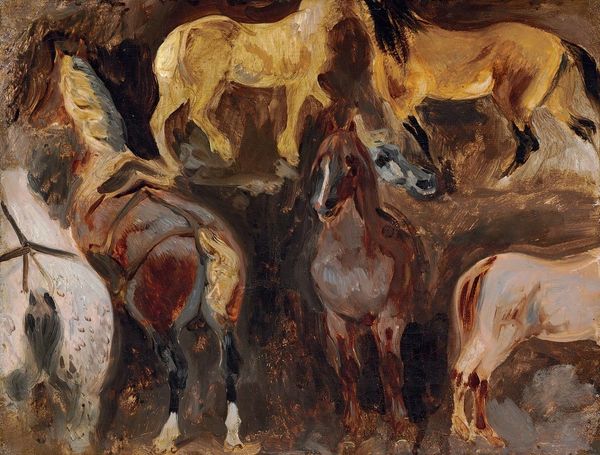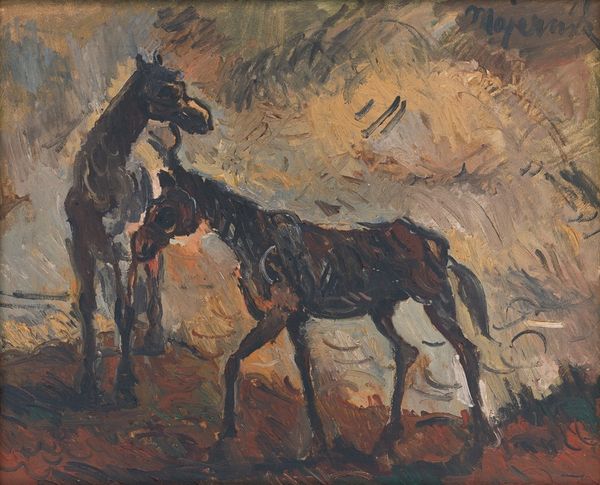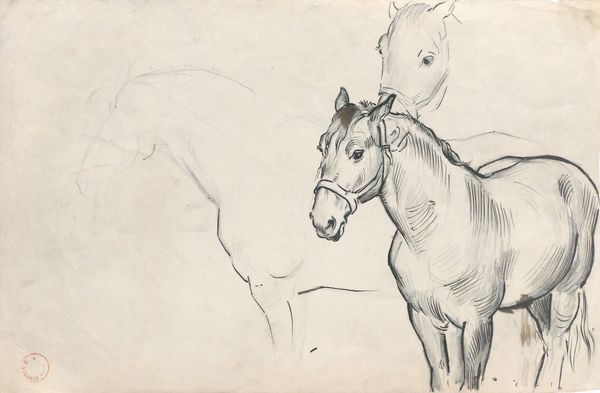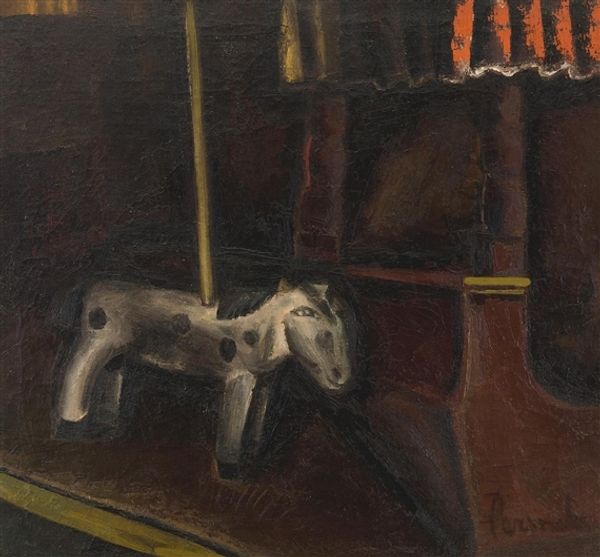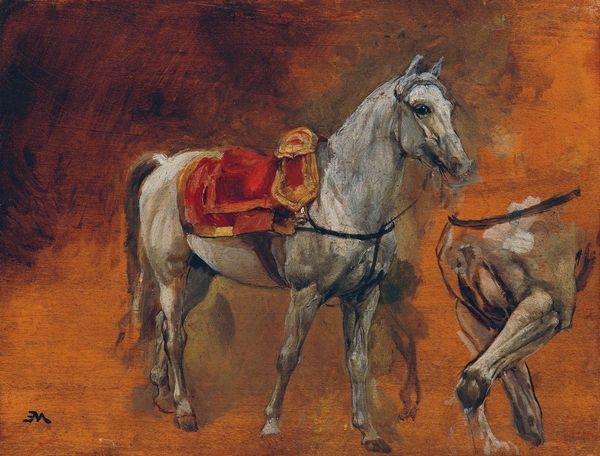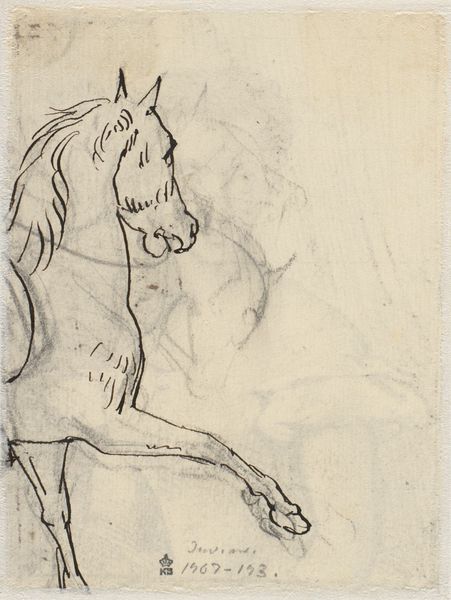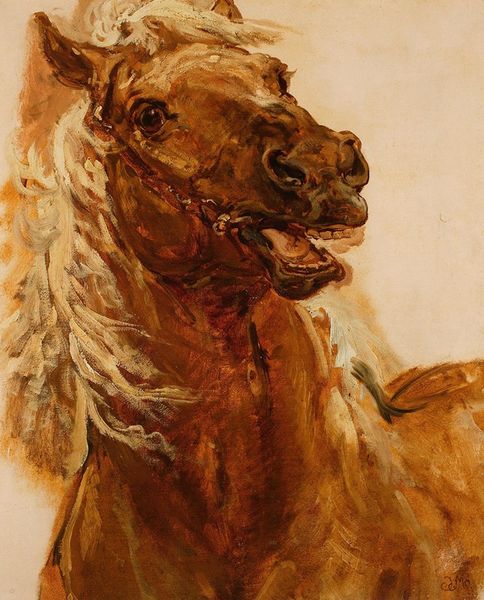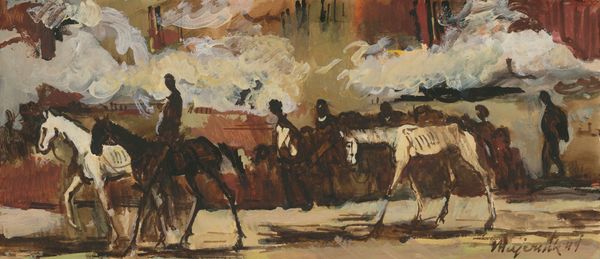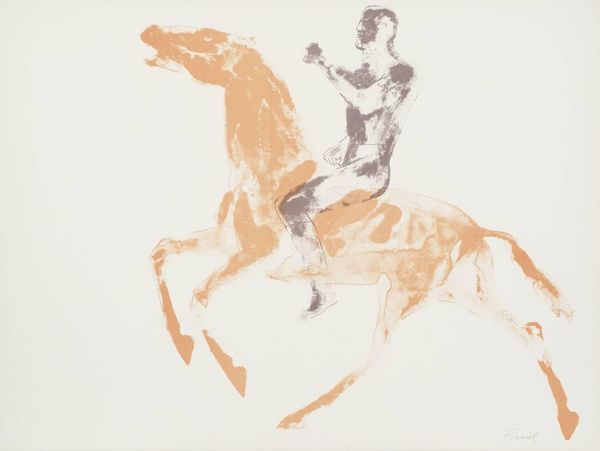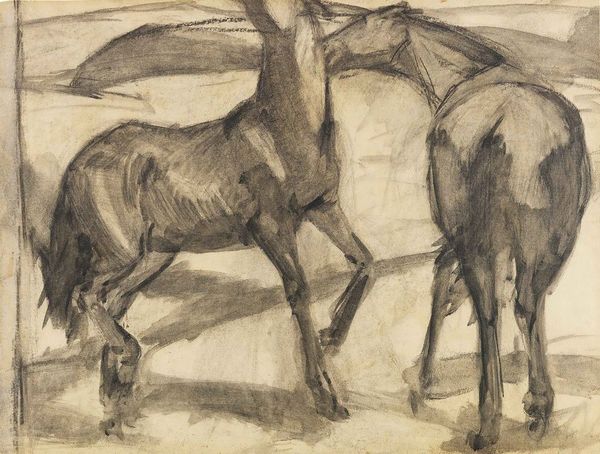
oil-paint, impasto
#
portrait
#
animal
#
oil-paint
#
landscape
#
charcoal drawing
#
oil painting
#
impasto
#
horse
#
realism
Copyright: Public domain
Editor: We're looking at "Study for the Fairman Rogers Four in Hand" by Thomas Eakins, an oil painting from 1879. The colours are muted, almost monochromatic. It feels like a sketch, a glimpse, rather than a finished piece. The brushstrokes are thick and raw, especially around the horses. What stands out to you most about it? Curator: It's interesting you use the word "raw." That perfectly captures Eakins' intent, I think. Forget the polished ideal, he seems to want to grab the essence, the weight, the very smell of the stables. You know, have you ever felt that electric jolt of muscle moving under a horse's skin? He's chasing that here. Look at how he suggests movement with those heavy strokes, almost impressionistic in their own way, wouldn't you say? Editor: I do see that now. It’s almost visceral! Before you mentioned his intention - would that intention affect his composition and his stylistic choices in the study? Curator: Absolutely. Realism, for Eakins, wasn't just about surface accuracy. He saw the human (and animal) form as a system, a set of engineering marvels to be understood through observation and, yes, even dissection! It’s kind of dark, sure, but knowing that adds depth, doesn’t it? And doesn't it affect how we react, or don't react, to these figures of elegance from days gone by? Editor: I think I do. This definitely helps appreciate the “rawness” I thought I perceived in the beginning. It feels more intentional than not. Thanks for that! Curator: And thank you for offering up such a visceral description that guided our chat about the guts beneath the elegance, something even horses may appreciate!
Comments
No comments
Be the first to comment and join the conversation on the ultimate creative platform.
